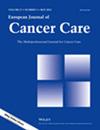急性白血病的治疗和生存:新南威尔士州的一项比较青少年和年轻人与儿童和成年人的研究
IF 1.8
4区 医学
Q3 HEALTH CARE SCIENCES & SERVICES
引用次数: 0
摘要
客观的研究急性淋巴细胞白血病(ALL)和急性髓系白血病(AML)治疗和生存的年龄差异。方法。包括2003-2015年在新南威尔士州癌症登记处诊断的1053名ALL/566名AML患者。12内治疗 使用关联的登记、医院和健康保险数据对诊断后的几个月进行评估。使用社会人口学调整的回归分析,对青少年和年轻人(AYA,15-24 年)作为参考类别。后果儿童开始ALL治疗的可能性比AYA低>3 诊断后的天数(调整比值比(aOR 0.39,95%CI 0.27–0.57))和多种治疗类型(aOR 0.22,95%CI 0.14–0.34)。对于AML,治疗开始的aOR>3 与AYA相比,儿童的天数为0.16(95%CI 0.09–0.29),治疗类型没有年龄差异。ALL的5年疾病特异性生存率为84%。儿童死于ALL的可能性低于AYA(调整后的亚致死率(aSHR 0.32,95%CI 0.22–0.50))。AML的相应生存率为73%,没有年龄差异。有多种ALL治疗类型的儿童在aSHR 2.67(95%CI 1.53–4.67)时死亡率增加,但在1.26(95%CI 0.67–2.47)时成人死亡率没有增加(交互作用p = 0.017)。在调整了社会人口学变量后,从诊断到初始治疗开始的时间和初始治疗类型与死亡率结果无关。结论ALL患儿存活率较高。ALL死亡率与多种治疗类型呈负相关。本文章由计算机程序翻译,如有差异,请以英文原文为准。
Treatment and Survival in Acute Leukemia: A New South Wales Study Comparing Adolescents and Young Adults with Children and Adults
Objective. To investigate age differences in treatment and survival from acute lymphoblastic (ALL) and acute myeloid leukemia (AML). Methods. 1053 ALL/566 AML patients diagnosed in 2003–2015 on the New South Wales Cancer Registry were included. Treatment within 12 months from diagnosis was assessed using linked registry, hospital, and health-insurance data. Differences by age at diagnosis in treatment and survival were investigated using socio-demographically adjusted regression analyses, with adolescents and young adults (AYA, 15–24 years) as the reference category. Results. Children were less likely than AYA to start ALL treatment >3 days from diagnosis (adjusted odds ratio (aOR 0.39, 95% CI 0.27–0.57)) and to have multiple treatment types (aOR 0.22, 95% CI 0.14–0.34). For AML, aOR of treatment start >3 days was 0.16 (95% CI 0.09–0.29) for children compared with AYA, with no age differences in treatment types. Five-year disease-specific survival for ALL was 84%. Children were less likely than AYA to die from ALL (adjusted subhazard ratio (aSHR 0.32, 95% CI 0.22–0.50)). For AML, the corresponding survival was 73% without an age difference. Children having multiple treatment types for ALL had an increased risk of mortality at aSHR 2.67 (95% CI 1.53–4.67), but not adults at 1.26 (95% CI 0.67–2.47) (interaction
p
= 0.017). Time from diagnosis to initial treatment start and initial treatment type were not associated with mortality outcomes after adjusting for socio-demographic variables. Conclusion. Children with ALL had better survival. ALL Mortality were negatively associated with multiple treatment types.
求助全文
通过发布文献求助,成功后即可免费获取论文全文。
去求助
来源期刊

European Journal of Cancer Care
医学-康复医学
CiteScore
4.00
自引率
4.80%
发文量
213
审稿时长
3 months
期刊介绍:
The European Journal of Cancer Care aims to encourage comprehensive, multiprofessional cancer care across Europe and internationally. It publishes original research reports, literature reviews, guest editorials, letters to the Editor and special features on current issues affecting the care of cancer patients. The Editor welcomes contributions which result from team working or collaboration between different health and social care providers, service users, patient groups and the voluntary sector in the areas of:
- Primary, secondary and tertiary care for cancer patients
- Multidisciplinary and service-user involvement in cancer care
- Rehabilitation, supportive, palliative and end of life care for cancer patients
- Policy, service development and healthcare evaluation in cancer care
- Psychosocial interventions for patients and family members
- International perspectives on cancer care
 求助内容:
求助内容: 应助结果提醒方式:
应助结果提醒方式:


